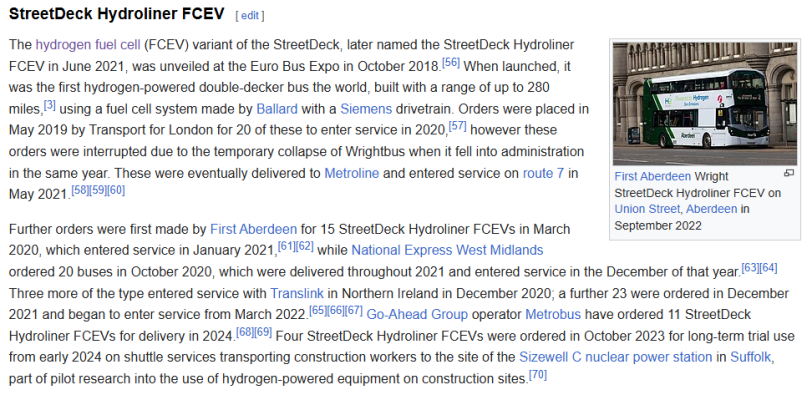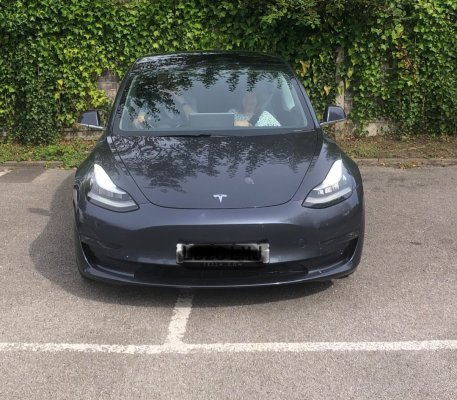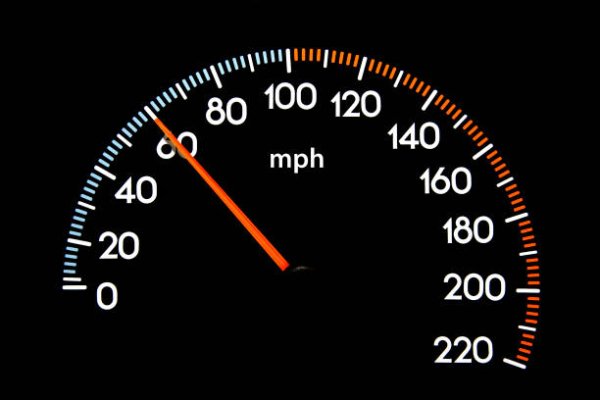I couldn't see that mentioned in any of the gen 2 Mirai reviews they have online. But they'd hardly have pulled a tank out to weigh - as mentioned I would personally take Toyota's figure, given that they actually make it.
Autocar too would have been quoting a figure given to them by Toyota. Either, the tank is now made lighter or, the figure supplied to Autocar included the valve.
For sure building in CF can be more expensive than steel, but BMW did manage to make 250,000 i3 EVs (with a carbon tub and body) without going bust so I don't believe making a relatively small and simple structure like a tank would render a car uneconomic to build. As mentioned BMW and Hyundai are also using CF tanks now - I seriously doubt they plan to make a loss on every car.
That's not what the i3 is made of. Only the body is carbon based. The chassis is aluminium. Again, if carbon fibre was affordable, why not for the chassis too?
I suspect you underestimate the task of a ''simple structure like a tank''. 700 bar is 10,290 psi. Like holding back four and a half tons with half of your thumb. The tensile stress in the tank walls is enormous and if any part of the tank is weakened (by accident) than the release of that stress energy backed by the expanding from 700 bar hydrogen is explosive. The explosive risk from that is such that the hydrogen need not ignite for the consequences to be fatal. You might want to consider the storage medium at refuelling stations WRT to materials used, cost, and danger to public re the explosive risk where storage has to be way in excess of that of a single vehicle.
Not compared to a BEV, which is the only other zero emission option.
This predicated by your original assertion that the van operator
wants to be emission free. Debatable when the legislation is considered.
Yes if you're following different/unpredictable routes. But TFL have run hydrogen buses in London for many years with a single fuelling point because (AFAIK) they only need filling once a day.
Buses and vans perform very different duties. Buses have been made to work on hydrogen but actual transportation of goods is lagging and is only making inroads at small scale - the ''last mile'' as I've heard it described. As we enter the haulier's world things are very very different regarding fuel usage.
Apart from the longer range you mean? The main one is that the range doesn't drop like a lead balloon when the weather gets a bit nippy. Not only does the fuel cell efficiency remain about the same, but it also produces waste heat that can be used to warm the vehicle up without consuming further power (just like an ICE). In something like a bus this is a big deal in cold weather as you have a huge space to maintain at a comfortable temperature for all the passengers.
There are those advantages, granted. Looking again at the loss of Vivaro payload. That 400kg loss looks a lot like circa 500kg of tankage containing circa 5kg of hydrogen. That inescapable 100:1 tare to content ratio that is the limit for steel.
From a quick Google there are already over 5,600 hydrogen fuel cell buses in service. Early days yet, but companies like Wrightbus (to pick one) seem to be doing OK with them now:
Buses not long distance coaches.
Will hydrogen vehicles be permitted to use the Channel Tunnel? Vehicles with LPG stored at a mere 10 bar aren't. Coach operators will want to know the answer to that.
But here's my question to you BTB500. Describe to me how hydrogen will be stored between generation and finally arriving in a Mirai's carbon fibre tank. What quantities will be held, in what type of vessel(s), at what cost, and located where?











